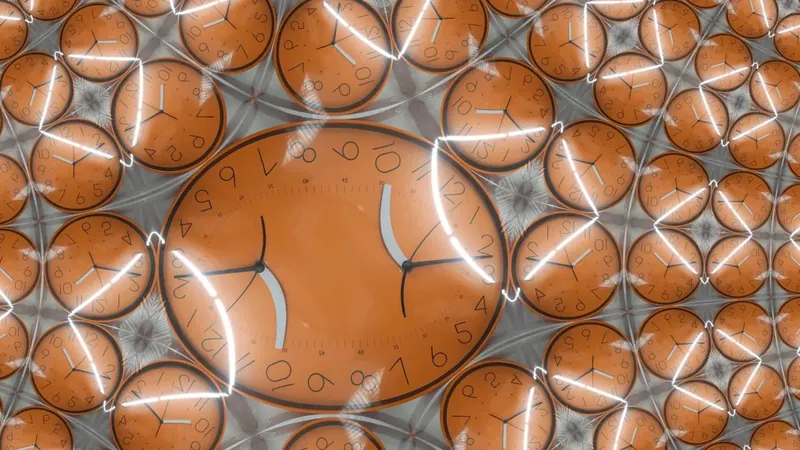
Scientists Create Synthetic Cells That Keep Time Like a 24-Hour Clock
2025-08-01
Author: Jia
Unlocking the Secrets of Our Biological Clocks
Scientists have taken a monumental leap in understanding how our bodies keep time, akin to a mechanical clock, by building synthetic cell-like structures that mimic this natural rhythm.
The Quest for Timekeeping Precision
Our circadian rhythm, or biological clock, dictates our sleep-wake cycles and plays a crucial role in overall health. To delve deeper into this biological phenomenon, researchers from the University of California, Merced, embarked on a groundbreaking study in which they constructed synthetic vesicles, small cell-like structures designed to emulate the inner workings of a clock.
Synthetic Vesicles and Clock Proteins
The team focused on three specific clock proteins sourced from cyanobacteria: KaiA, KaiB, and KaiC. These proteins are pivotal in regulating the circadian cycle, with KaiC serving as the central coordinator. By incorporating these proteins into vesicles just 2 to 10 micrometers wide, the researchers were able to observe the natural timekeeping behavior of these artificial structures.
The Impact of Size and Composition
Results showed a fascinating correlation: the accuracy of the timekeeping was directly tied to both the concentration of clock proteins and the size of the vesicles. Larger vesicles filled with more proteins performed significantly better in maintaining their biological rhythm. This discovery sheds light on how different organisms might adapt their internal clocks based on their cellular dimensions.
Essential Insights for Health and Medicine
This innovative research not only deepens our understanding of biological timekeeping but also has significant implications for health. Disruptions to circadian rhythms are linked to various health conditions, including cardiovascular diseases and cancer. Moreover, advancements in fields like chronochemotherapy could enhance treatment efficacy by timing medications to align with the body's natural rhythms.
A New Frontier in Biological Research
The study’s lead author, Anand Bala Subramaniam, emphasizes the importance of these findings in dissecting the core principles of biological timing. As these synthetic systems evolve, they may provide powerful tools for studying how organisms across life forms manage time. Mingxu Fang, a microbiologist from Ohio State University, praised the study for its innovative approach, suggesting it opens new avenues for research on timing strategies in various species.
Conclusion: The Clockwork of Life
In conclusion, while cells may contain the smallest clocks on Earth, their role in life is profound. Understanding these biological timekeepers could not only enhance scientific knowledge but also pave the way for improved medical treatments.



 Brasil (PT)
Brasil (PT)
 Canada (EN)
Canada (EN)
 Chile (ES)
Chile (ES)
 Česko (CS)
Česko (CS)
 대한민국 (KO)
대한민국 (KO)
 España (ES)
España (ES)
 France (FR)
France (FR)
 Hong Kong (EN)
Hong Kong (EN)
 Italia (IT)
Italia (IT)
 日本 (JA)
日本 (JA)
 Magyarország (HU)
Magyarország (HU)
 Norge (NO)
Norge (NO)
 Polska (PL)
Polska (PL)
 Schweiz (DE)
Schweiz (DE)
 Singapore (EN)
Singapore (EN)
 Sverige (SV)
Sverige (SV)
 Suomi (FI)
Suomi (FI)
 Türkiye (TR)
Türkiye (TR)
 الإمارات العربية المتحدة (AR)
الإمارات العربية المتحدة (AR)